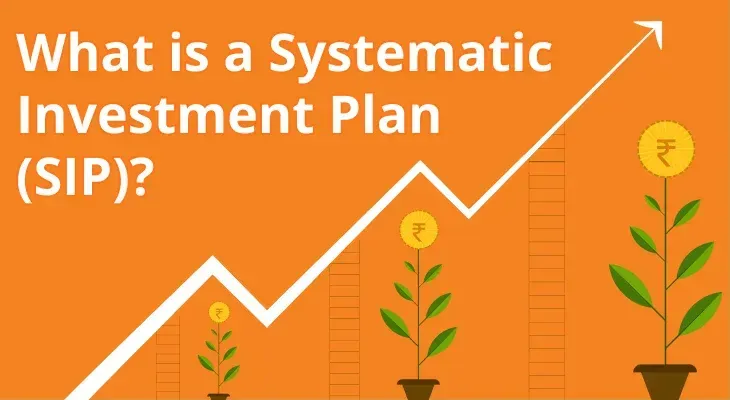
What is IDCW in Mutual Fund?
Mutual funds, while potentially rewarding, can also appear complicated or confusing to beginners. There are several terms and concepts that you need to be aware of in order to make informed investment decisions. One such term is IDCW. You may have come across this term often while exploring mutual funds. If you’re wondering what it means, let us break down what IDCW is mutual funds, why it matters, and how it can impact your investments.
What is IDCW in Mutual Funds?
IDCW, or Income Distribution cum Capital Withdrawal, is a term introduced by SEBI (Securities and Exchange Board of India) to replace the word "dividend" in mutual funds. This change was implemented to clarify the nature of payments that investors receive from mutual funds. Unlike dividends from stocks, which are paid out of a company's profits, IDCW is distributed from the profits and gains made by the mutual fund scheme. This means that when a mutual fund declares an IDCW, it is giving you a portion of the income the fund has generated, along with some of your own invested capital. This distinction is important because it impacts how you perceive your returns and how these payouts are taxed.
Why did SEBI Rename Dividend to IDCW?
The primary purpose of SEBI’s renaming of dividend to IDCW was to eliminate confusion and bring more transparency to mutual fund investments. The term "dividend" often led investors to believe that they were receiving a share of the profit, similar to stock dividends. However, in mutual funds, these payouts were not solely from profits but also included a portion of the capital invested by the investors themselves.
By introducing the term IDCW, SEBI clarified that these distributions are not purely profits but can include the return of capital. This change helps investors make more informed decisions and better understand the nature of their returns. The shift also aligns with SEBI’s broader efforts to ensure that mutual fund investors are fully aware of the products they are investing in, thereby promoting greater transparency and investor protection.
How are IDCW Schemes Taxed?
The tax implications of IDCW are a crucial consideration for investors. IDCW payouts are added to your total taxable income and are taxed according to your income tax slab. Moreover, if your dividend exceeds ₹ 5,000 for the year, your asset management company (AMC) will deduct TDS before paying the dividend. No TDS is deducted for dividends below ₹ 5,000.
Before the introduction of IDCW, dividends were taxed differently. The mutual fund company paid Dividend Distribution Tax (DDT) of around 15% before distributing dividends to investors. With the introduction of IDCW, the responsibility of paying taxes has shifted to the investors. This change means that if you fall into a higher tax bracket, you could end up paying a substantial amount in taxes on your IDCW income, which could lower your effective returns from the investment.
Who Should Invest in IDCW?
IDCW schemes are typically suitable for investors seeking regular income from their investments. This is particularly appealing to retirees or those who require a steady cash flow to meet their expenses. However, while the idea of receiving regular payouts might seem attractive, it is essential to understand that these payouts come from the fund’s profits and your invested capital. This means that over time, the value of your investment could decrease, especially if the fund underperforms or the payouts are significant.
Investors who are in lower tax brackets and are looking for regular income might find IDCW schemes more beneficial. However, for those in higher tax brackets, growth options where the returns are reinvested in the fund could be more tax-efficient in the long run.
How to Calculate IDCW with Example?
Calculating IDCW is relatively straightforward but understanding its impact is crucial. Suppose you have invested ₹ 1,00,000 in a mutual fund scheme, and the Net Asset Value (NAV) before IDCW is ₹ 20. This means, the total number of units you hold is 5,000. Now, if the IDCW for the fund is declared at ₹ 2 per unit, your IDCW payout would be ₹ 10,000 (₹ 2 x 5,000 units).
However, after the IDCW is paid out, the NAV of the mutual fund will decrease by the IDCW amount. In this case, the new NAV would be ₹ 18 (₹ 20 - ₹ 2). Your investment value will now be ₹ 90,000 (5,000 units x ₹ 18 NAV) since you have already received the remaining ₹ 10,000 as IDCW payout. This example illustrates that while you receive IDCW as cash, the value of your investment reduces accordingly. Therefore, it's crucial to consider the IDCW not just as income but also as a partial return of your capital.
Benefits of IDCW
Investing in IDCW mutual funds can offer a variety of benefits, such as:
- Regular Income: IDCW provides a consistent source of income, making it an attractive option for retirees or those seeking periodic cash flow.
- Profit Lock-In: You can enjoy the profits generated by the mutual fund without needing to sell your units, which is beneficial during market volatility.
- Flexibility: IDCW schemes offer flexibility, as you can choose to receive the payouts as cash or reinvest them in the scheme, depending on your financial needs.
- No Need to Time the Market: With IDCW, you receive income at regular intervals without worrying about market timing, making it a convenient option for investors who prefer a hands-off approach.
- Diversification of Income Sources: IDCW can act as an additional income stream, diversifying your sources of income and providing financial stability.
Having said that, you must weigh all the pros and cons carefully before deciding if IDCW is the right investment option for your unique financial needs.
Conclusion
IDCW in mutual funds is a concept that requires careful consideration, especially regarding its tax implications and impact on your overall investment. While it provides a source of regular income, it is essential to understand that this income includes a part of your invested capital, which can affect the long-term growth of your investment.
Before opting for IDCW schemes, it’s crucial to evaluate your financial goals, tax bracket, and need for regular income. IDCW might be suitable for investors looking for periodic cash flow, especially those in lower tax brackets. However, for those focused on long-term wealth creation, reinvestment options might be more beneficial. Always consider the implications of IDCW on your overall financial strategy and consult with a financial advisor if needed to make the best decision for your investment needs.
FAQ
What is better, growth or IDCW?
The choice between growth and IDCW depends on your financial goals and investment strategy. For long term investors, the growth option might be better as it reinvests the profits back into the scheme, potentially increasing the value of your investment. On the other hand, if you prefer regular income from your investment, the IDCW option is suitable as it provides periodic payouts.
What is the difference between Reg G and IDCW?
"Reg G" usually refers to "Regular Growth" options in mutual funds, where profits are reinvested into the fund, leading to capital appreciation over time. In contrast, IDCW (Income Distribution cum Capital Withdrawal) involves the distribution of profits at regular intervals to the investors, providing them with periodic income.
How is IDCW taxed?
IDCW is added to your total taxable income and taxed according to your income tax slab. This can affect investors in higher tax brackets, potentially reducing their effective returns from IDCW schemes. It is important to consult a tax advisor to understand the implications.
Why did SEBI change the term dividend to IDCW?
SEBI renamed dividend to IDCW to clarify that the payouts include both income and a return of capital. This change promotes transparency and helps investors better understand their mutual fund returns.
Can we change from IDCW to a growth option?
Yes, you can switch from the IDCW option to the growth option in a mutual fund. This can be done by submitting a request to your mutual fund provider. However, keep in mind that switching may have tax implications, and it’s advisable to consult with a financial advisor before making any changes to your investment strategy.
How does IDCW impact the NAV of a mutual fund?
When IDCW is paid out, the NAV of the mutual fund decreases by the IDCW amount. This reflects the reduction in the value of the fund's assets after the payout.
What are the benefits of investing in IDCW mutual funds?
The primary benefit of IDCW mutual funds is the regular income they provide, which can be attractive to investors needing consistent cash flow without selling their units.
How is IDCW different from dividends in stocks?
Unlike stock dividends, which are paid from a company’s profits, IDCW in mutual funds includes both profits and a portion of the investor's capital. This makes IDCW a return of both income and capital.
Who should invest in IDCW schemes?
IDCW schemes are ideal for investors seeking regular income, such as retirees or those needing periodic cash flow. However, it’s crucial to consider your tax bracket and investment goals before opting for IDCW.
What should I consider before investing in IDCW schemes?
Before investing in IDCW schemes, consider your need for regular income, your tax bracket, and the impact on your long-term investment goals. It's essential to assess whether IDCW aligns with your financial strategy.


